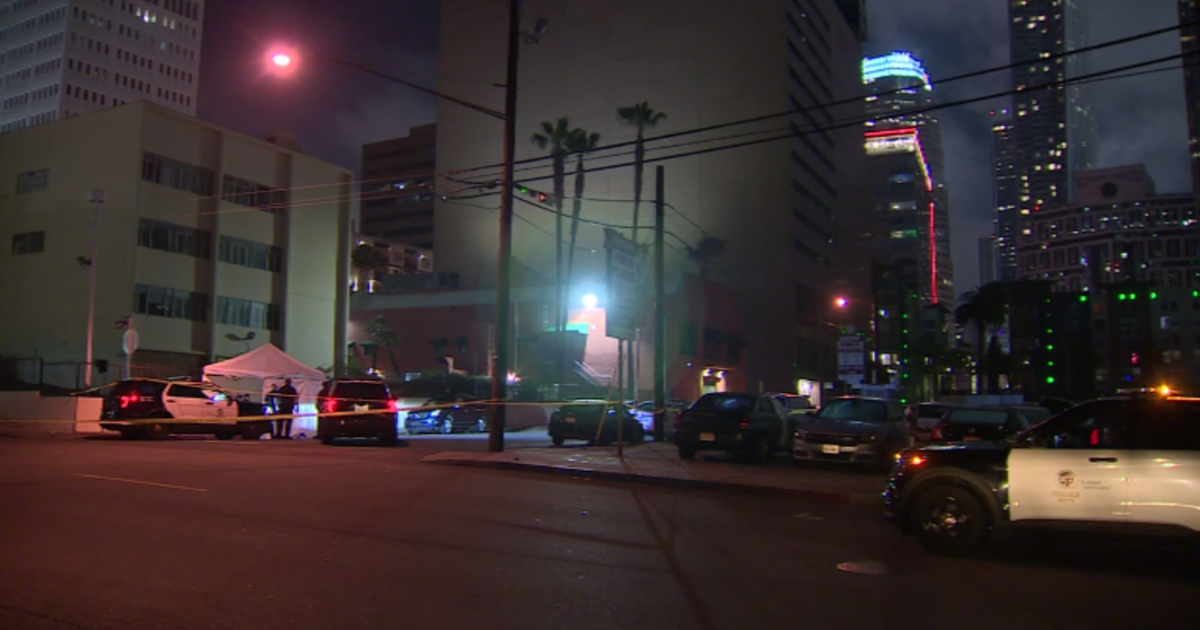Officials Expect This To Be Worst Fire Season Ever
GRIFFITH PARK (CBSLA.com) — This is shaping up to be the worst season for wildfires in the last 100 years, officials announced Monday.
"We're going to have a very volatile fire season. We are in the third year of a drought," L.A. County Fire Chief Darryl Osby said.
So far in 2013, three large brush fires, the Hathaway, Powerhouse and Springs fires, have kept agencies busy ahead of the usual fire season.
"Extremely dry weather, extremely dry fuel moisture so it makes for almost an explosive situation at times," Cpt. Tom Richards of the LACFD told KNX 1070.
"We usually don't get to a critical state until the fall, but we're projecting we're gonna get to a critical state in July," another fire official said.
SoCal Fire Agencies Share 2013 Fire Season Outlook
"I feel like we're always at risk," said Carbon Canyon resident Trish Hocking. "We had a bad fire, it devastated the neighborhood, made us all on high alert from then on...we're ready to go if we need to."
Firefighters from across Southern California met in Diamond Bar Monday, where they worked on mutual aid coordination and learning about additional resources they will have in August.
L.A. City and County will have two Super Scooper water-dropping aircraft and an Erickson Air-Crane, which is an orange water-dropping helicopter, at their disposal. Normal aircraft drop between 400 to 1,000 gallons of water; the Air-Cranes are capable of dropping 2,600.
Aside from the 2013 Fire Season Outlook, officials also discussed potential impacts on fire response due to budget constraints and important safety information for those most likely to be impacted by the devastating effects of a wildland fire.
Officials say homeowners need to do their part by cutting shrubs and certain kinds of trees.
Fire Safety Tips:
Home Landscaping and Yard:
-Remove flammable vegetation and other combustible growth within 30 ft. of any structures.
-Increase to 50 ft. in high hazard areas. Thin out or remove other vegetation an additional 70 ft. from structures for a total of 100 ft. (200 ft. in high hazard areas)
-Single trees, ornamental shrubbery and ground covers may be permitted provided they do not readily transmit fire from native vegetation to structures
-Landscape with plants that are drought tolerant and fire resistant. Maintain plants!
-Space trees and shrubs a minimum of 15 ft. apart or three times their diameter from other shrubs
-Trees should be spaced to allow a minimum of 30 ft. between canopies at maturity
-Trees taller than 18 ft., prune lower branches within 6 ft. of the ground
-For trees and shrubs of less than 18 ft. prune lower branches to one-third of their height
-Maintain all plants by regularly removing dead branches and leaves
-Remove all stacks of combustible materials
-Stack wood at least 30 ft. from structures. Remove flammable vegetation within 10 ft. of woodpiles
-Locate fixed butane/propane tanks at least 10 ft. from any structure and maintain 10 ft. of clearance
Home Access:
-Identify at least two exit routes from your neighborhood
-Post road signs to show traffic restrictions such as dead-end roads and height and weight limits
-Clear back flammable vegetation at least 10 ft. from roads and driveways
-Cut overhanging tree branches above roads to provide minimum of 16 ft. of clearance
-Make sure street names and numbers are visible at intersections
-Post address on front of house. If your house is not visible from street, post sign next to the vehicle entrance



